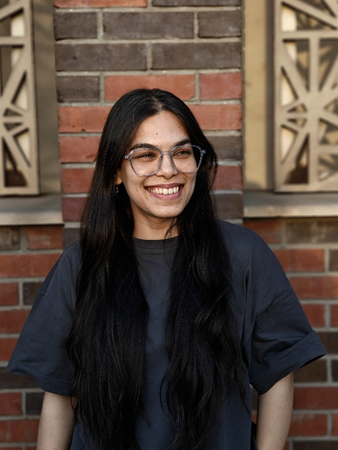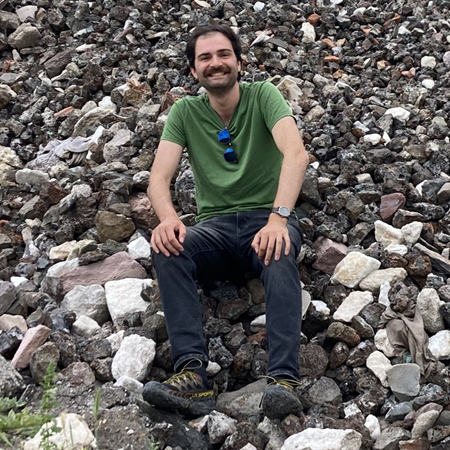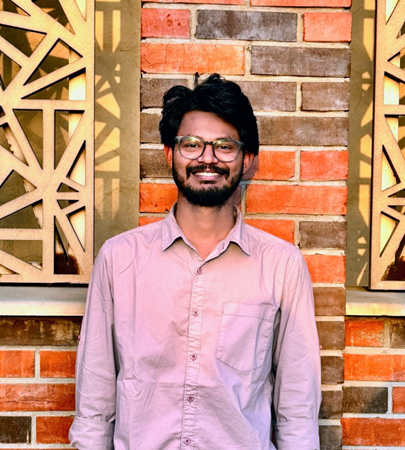SAS is excited to share news of the 2025 recipients of the Student and ECR Research Support Award, given earlier this spring! This year’s awardees are Malavika Chatterjee (Postdoctoral scholar, Indian Institute of Technology Gandhinagar), Braden Cordivari (PhD student, New York University), and Amit Ranjan (PhD student, Ashoka University). The awards will support these three scholars as they undertake research into lithic technology (Malavika), ceramic production (Amit), and metallurgy (Braden). The recipients will conduct analysis using a range of established and cutting-edge techniques, from gathering microstructural and compositional data to morphometric modeling and machine learning, and we look forward to following the results of their research!
Malavika Chatterjee: “Towards developing an analytical and digital framework for the Indian Palaeolithic”

The project examines the variability in Palaeolithic artefacts from key sites in southern India by digitally documenting them through 3D scanning and Photogrammetry and analysing them with Geometric Morphometrics. These innovative digital documentation methodologies will supplement decades of published literary research (on explorations and excavations) and traditional approaches in lithic analysis (typo-technological analysis) to develop a comprehensive, open-source digital database of the Indian Palaeolithic. By understanding variability in lithics through different methodologies and adopting machine learning, an attempt will be made to develop a model(s) with a lexicon and glossary for relevant terms in lithic technology and analyses developed from the Indian Palaeolithic assemblages. The research endeavours to integrate lithics found in non-primary contexts into the database to actively incorporate them into our understanding of the Indian Palaeolithic. Ultimately, this dataset(s) can then be made accessible virtually, resulting in the assimilation of archival collections, knowledge sharing and encouraging studies in prehistory.
Braden Cordivari: “The golden touch beyond Midas: technological innovation and social value of brass alloying in Iron Age central Anatolia, 12th-4th centuries BCE”

Brass alloys (copper-zinc) appear in Anatolia in the early 1st millennium BCE, centuries before their widespread adoption across western Asia and the Mediterranean during the Roman period. High quality copper alloy metalwork is a hallmark of Iron Age Anatolia, remembered later by the Greeks as the ‘golden touch’ of the Phrygian king Midas. My PhD project examines the use of brass alloys in central Anatolia, particularly at the site of Gordion, the Phrygian capital. Preliminary results from pXRF show that brass is more widespread than previously recognized. The support of the SAS Award will enable examination of working practices through metallographic and SEM analysis in order to understand whether brass and non-brass alloys were crafted in similar ways. Braden’s research interests generally include craft production, archaeometallurgy, and pyrotechnology, as well as the between political networks and craft practices.
Amit Ranjan: “Tracing the Development of Indus Ceramic Tradition and Production Technique using ceramic Petrography and ICP-MS Analysis of regional Indus pottery from Rakhigarhi”

The primary objective of this research is to investigate the continuity and changes in regional pottery production technologies and cultural choices. It focuses on the selection of raw material, clay preparation and firing technologies in ceramic traditions from the Hakra Ware Phase to Early Harappan (Sothi-Siswal) and Mature/Urban Phase at Rakhigarhi (RGR-7) in the Ghaggar Basin, using a combination of traditional typological analysis with advanced analytical methods like ICP-MS and Petrology. Amit’s research investigates ancient ceramic production technologies, aiming to reconstruct the development, transmission, and adoption of technological knowledge across generations and cultures. He explores standardization in ceramic production, the selection and provenance of raw materials, tempering practices, firing conditions, and decorative techniques such as painting. Using advanced analytical methods—including XRF, ICP-MS, FTIR, XRD, Raman spectroscopy, microscopy, and 3D geometric morphometrics—Amit analyzes the chemical, mineralogical, and petrographic composition of ceramics to understand their socio-economic and cultural significance.
